English Mastiff vs Tibetan Mastiff: What’s the Difference?
Contemplating about getting a large doggy? The English Mastiff or the Tibetan Mastiff might just be the right fit for you! Both dogs are extraordinarily big right from first glance and they both can make you stand in awe as they display their magnificent and unique features.
The most obvious difference you’d notice between these two large canines is the coat. The Tibetan Mastiff is fluffy in appearance which almost resembles the look of a mountain lion. Meanwhile, the English Mastiff is plump and short-coated yet still gives out an impression that he is massive!
To arrive at a well-thought-out decision, get to know both breeds by reading this article. By doing so, you’ll determine which of the two suits your lifestyle better.
Table of Contents
Breed Origins
English Mastiff
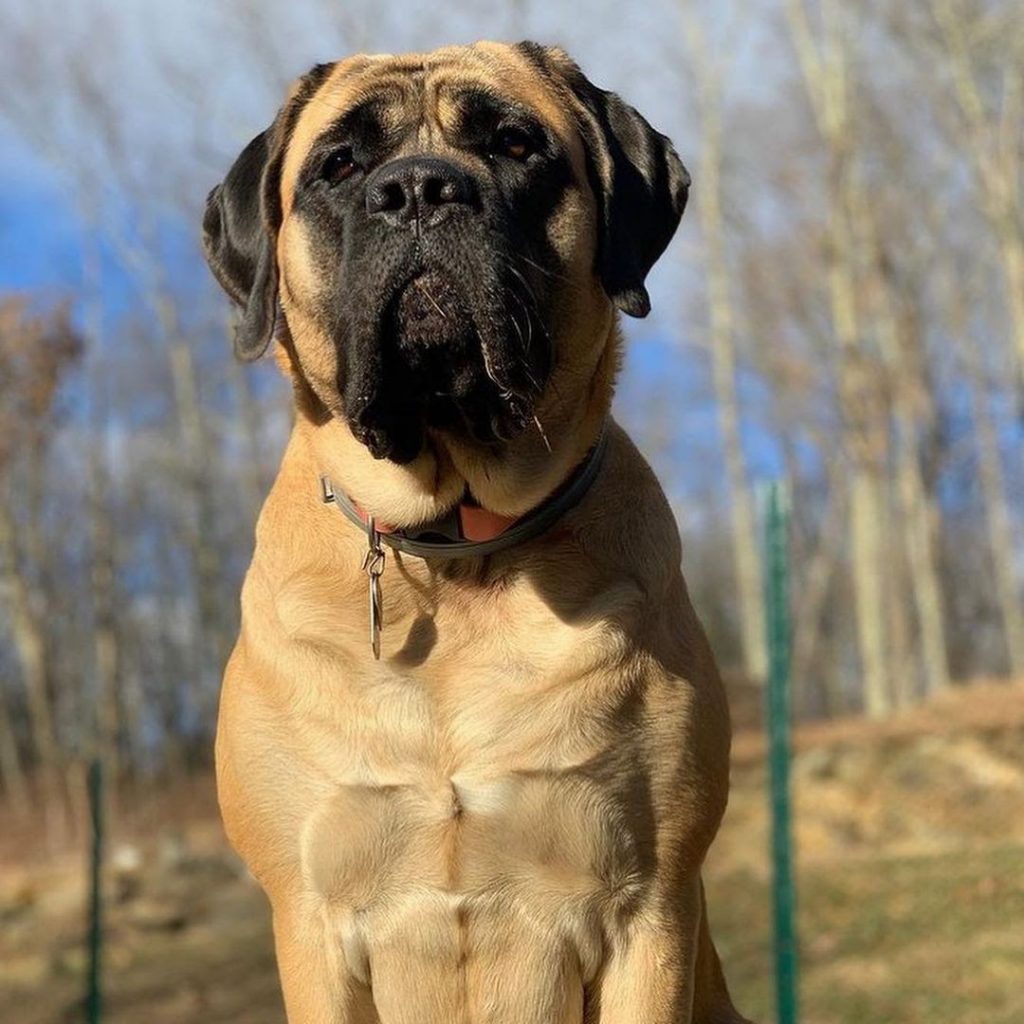

Originally, the old English Mastiff has been bred to guard flocks or participate in battles. It is claimed that in the past, he was much leaner and smaller making him capable of fighting in wars under the harsh sun without getting exhausted right away.
Aside from being a sort of battle ammunition, the English Mastiff served as a field guardian, ensuring the safety of the farmers’ cattle day and night.
He, later on, arrived in England and the people took interest in the said breed. He got further developed mainly on temperament and was used to guard properties. When dogfights got banned and the two world wars broke out, he almost got extinct. Luckily, two English Mastiffs from Canada were brought in to reignite the breed.
Tibetan Mastiff
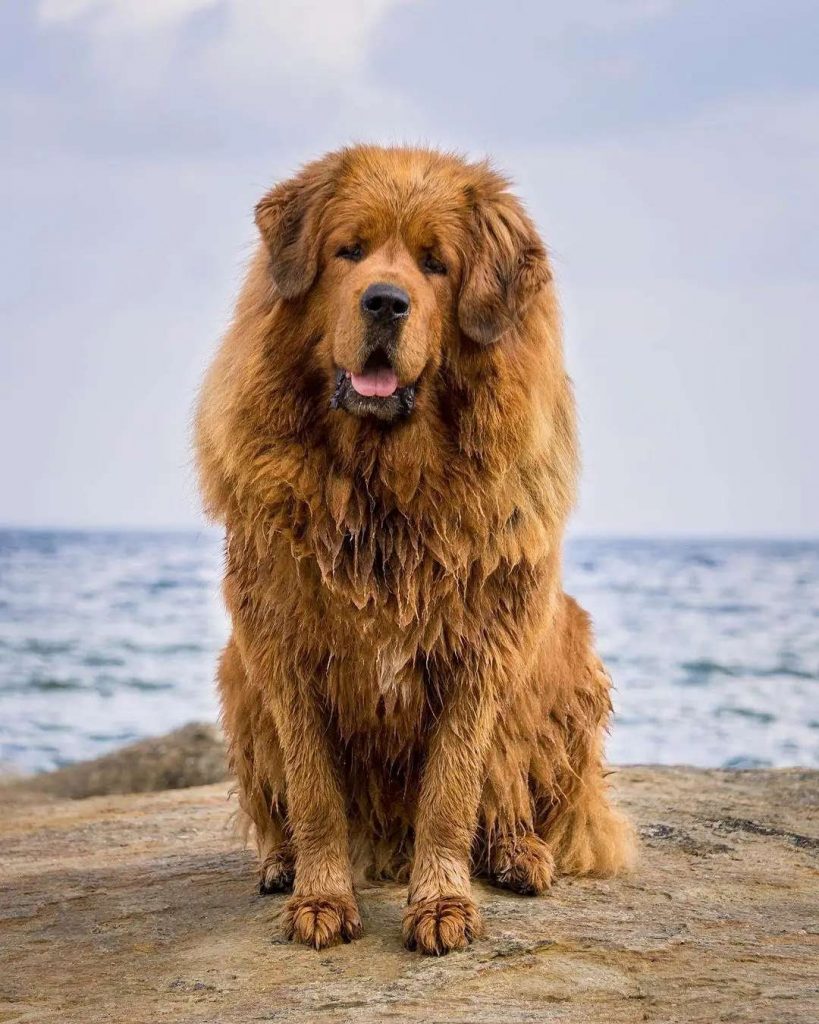

Just by its name, you’d know that the Tibetan Mastiff came from Tibet. He’s believed to have been around for many centuries although there are insufficient records that could track down his history. What we are certain of is that Mastiff-like dogs started to exist 5,000 years ago in Tibet and they are highly likely the ancestors of the Tibetan Mastiff.
This breed had two types: the Do-Khyi who served as flock guardians or companions for nomadic shepherds and the Tsang-Khyi who served as guardians of the Tibetan Buddhist monks or lamas.
During the reign of Queen Victoria in 1847, the Viceroy of India gifted her the first dog from Tibet. England’s Kennel Club, later on, included the Tibetan Mastiff as an official breed in 1873. When World War II occurred, the breeding was halted until English and American breeders in 1976 made the effort to import the dog back to England, Europe, and America again.
Size, Appearance, & Coloring
English Mastiff
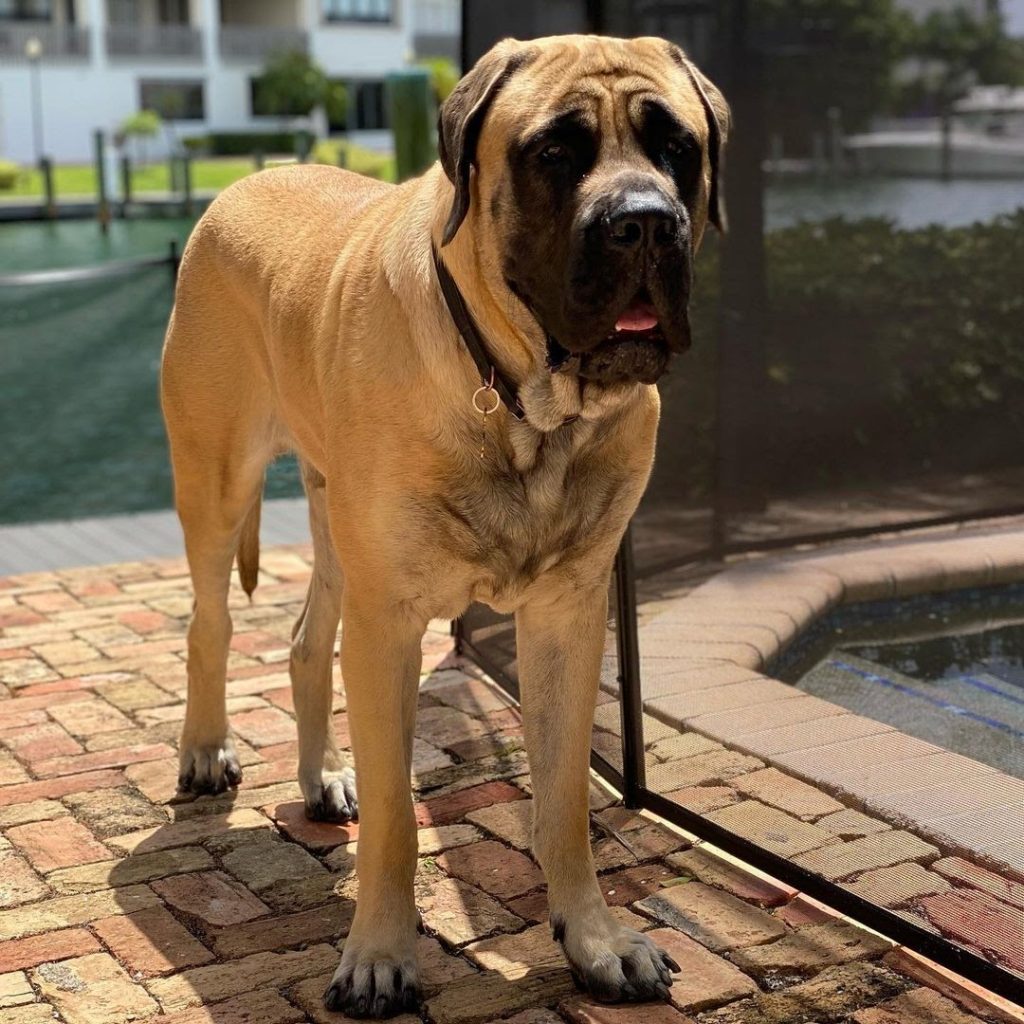

The trademark features of the English Mastiff are composed of a black mask surrounding his eyes down to his mouth where loose jowls are present. His eyes are set apart just right and are usually brown or hazel. The ears’ shade is the same as his face making it look prominent as well.
The head is heavy and broad, the neck thick, and the body robust. The topline is slightly arched from head to tail that tapers in the end. In some cases, owners opt to dock their Mastiffs. The two front legs are straight while the ones at the back are angulated and muscular. All paws are big and the paw pads are dark.
Regarding size, gender becomes a factor. Here’s a table that will better aid you in terms of the English Mastiff’s measurements:
| Gender | Weight | Height |
| Male | 160-230 pounds | 30 inches & up |
| Female | 120-170 pounds | 27.5 inches & up |
On another note, his topcoat is short and straight with a dense, shorter undercoat. There are only three recognized colors which are the:
- Fawn
- Brindle
- Apricot
Tibetan Mastiff
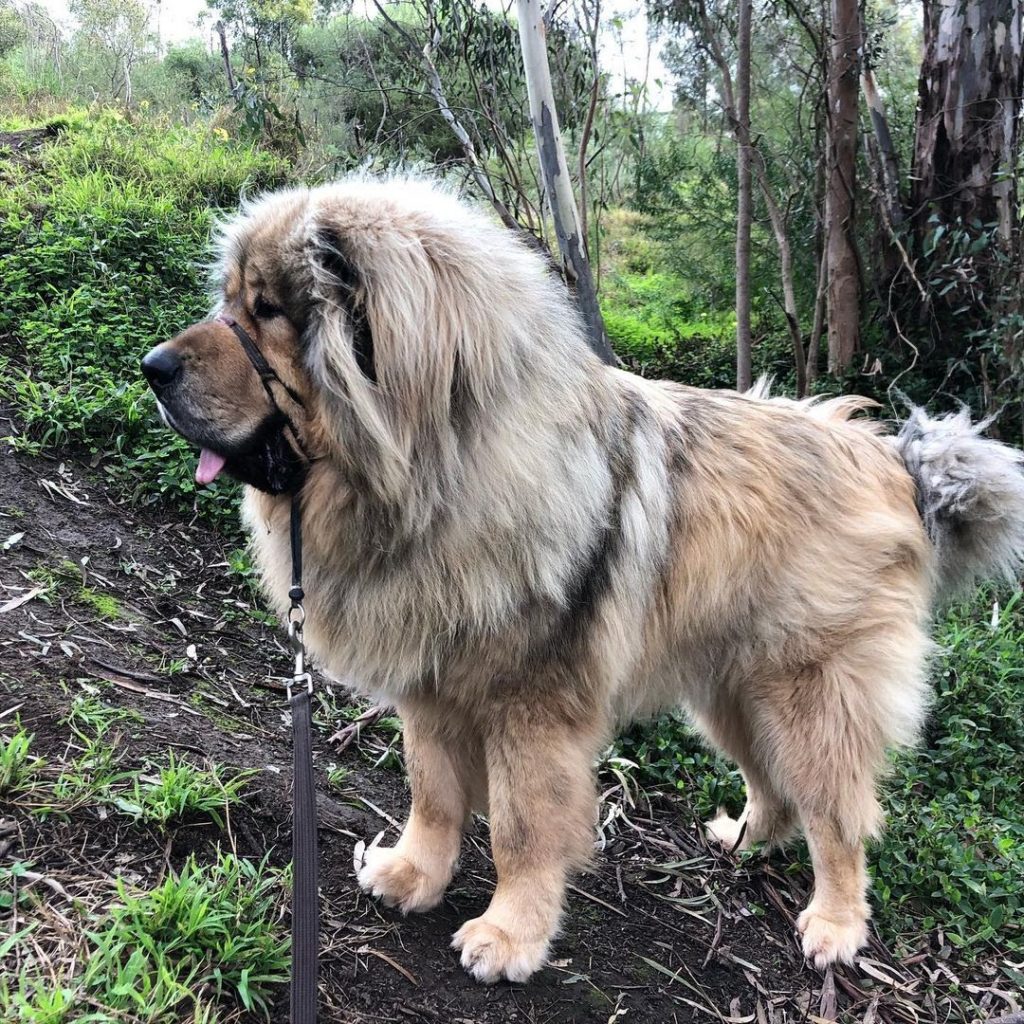

Solemn in looks, the Tibetan Mastiff is undeniably a large one. He is athletic, alert, and maintains an impressive body stance at all times. His eyes are deep-set, almond-shaped, and brown. His square muzzle is broad and it contributes well in giving people the impression that he’s an excellent watchdog.
His tail is feathery and is curled over the back. What most people find to be fascinating about this dog breed is its coat. He’s got a heavy and thick mane that almost resembles that of a lion. He has coarse guard hair and a wooly undercoat.
You can find a Tibetan Mastiff sporting different colors which are:
- Black
- Black & tan
- Red gold
- Blue-gray
- Brown & tan
- Brown
To know exactly his measurements, the table will lay out his height and weight with the corresponding gender:
| Gender | Weight | Height |
| Male | 90-150 pounds | 26 inches minimum |
| Female | 70-120 pounds | 24 inches minimum |
Temperament
English Mastiff
Remarkably known for being a behemoth, people would often assume that the English Mastiff is a threatening and aggressive canine. However, those who own such a type of dog would disagree. Despite his size, the English Mastiff is a sweetheart! He is gentle and patient, especially when around your older kids.
He loves to be with his family all the time. Having other pets isn’t something you have to worry about since proper socialization can deter him from activating his prey drive. Just make sure that when you own several other pets, you are capable of giving each one of them the right amount of affection and attention to avoid jealousy.
Strangers who visit the house should be properly introduced to your dog. Although the Mastiff can act aloof or timid, the presence of unfamiliar people might make him cause unnecessary events.
Tibetan Mastiff
Dubbed as a sensitive breed, the Tibetan Mastiff won’t find it hard to get himself attuned with other people’s emotions. Expect him to switch into a protective dog whenever conflicts arise in your home. Generally, this dog is best suited to peaceful and loving environments.
You can highly depend on this dog due to his high sense of self-awareness in case you let your kids play with him. Still, supervision is important to avoid innocent rough play. He is not an aggressive dog toward his family, but it would be bad luck for intruders to end up in a house with a Tibetan Mastiff. He is territorial and highly demands respect for an area he considers his or of his owners.
He can go along very well with other dogs and animals as long as he’s socialized early as a puppy. His intolerant behavior can be curbed, but don’t assume that his dominance will no longer be there.
Trainability & Intelligence Level
English Mastiff
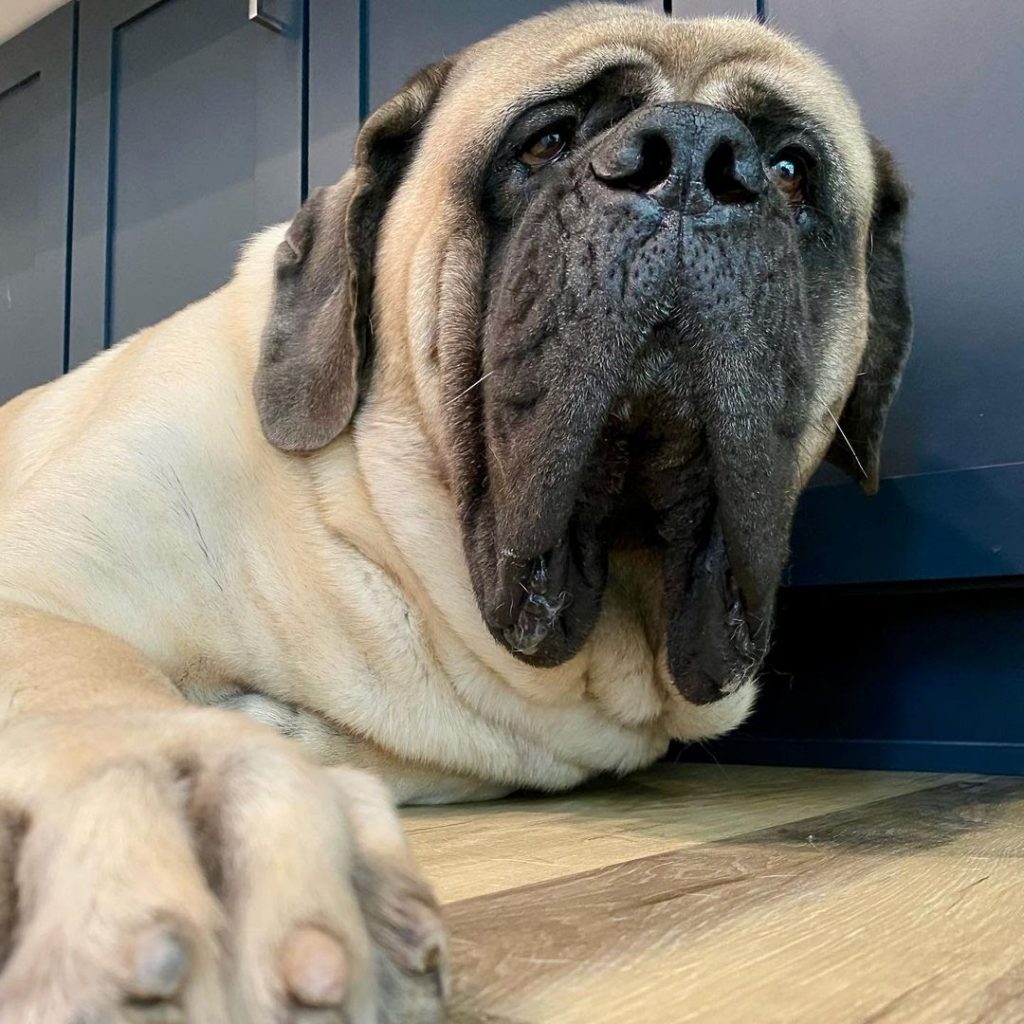

English Mastiffs are intelligent in their rights. Although he isn’t the first dog to come to people’s minds when asked which breed is the smartest, the English Mastiff can’t be presumed to be dumb. He might pick up lessons like a sloth, but he’ll eventually learn things if you positively reinforce him.
He can be hard-headed at times, but instead of giving up, discover the reasons that make him resist your commands. You might be enforcing repetitive drills or the quests are too easy to mentally stimulate your four-legged friend. To make it easier for you, start training him once he’s 8-12 weeks old. By doing so, he’ll get used to accomplishing regular tasks.
Tibetan Mastiff
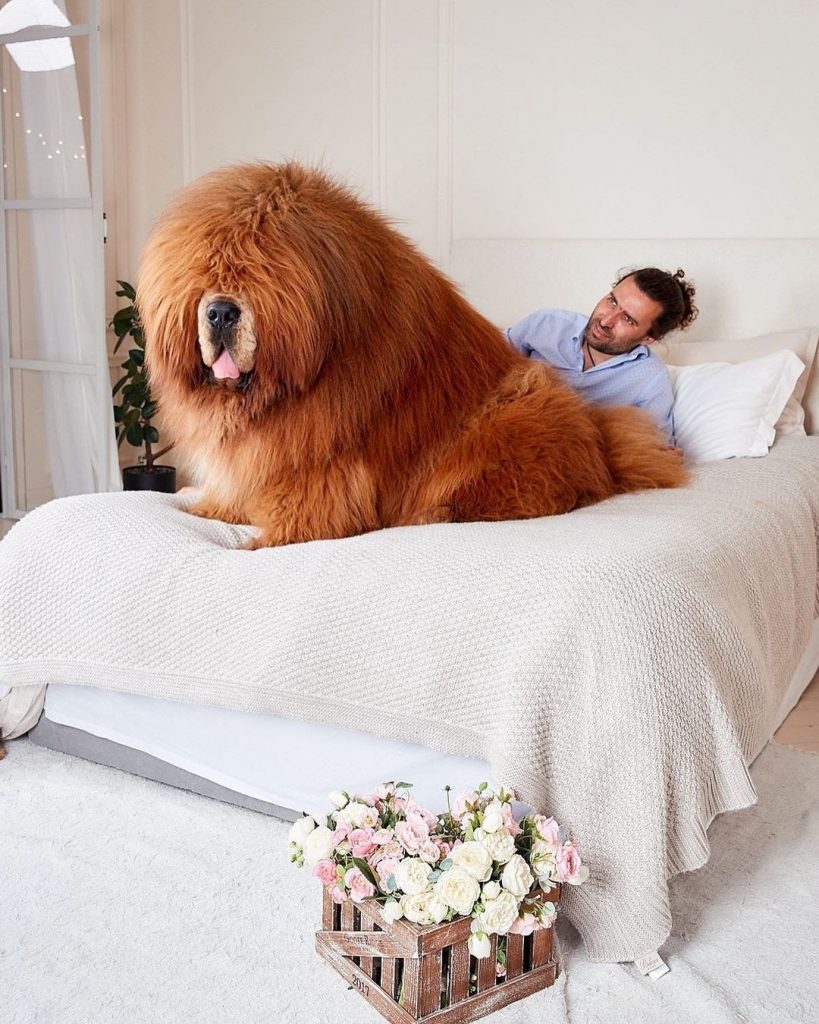

Known to be independent, it can be a challenge to train the Tibetan Mastiff. You can call a professional dog trainer, but nothing beats having you as his very own handler. Training time is also an opportunity to bond with your dog so make the most out of it as much as you can.
Additionally, beware that your pet can be extremely dominant. He naturally sees himself as the leader of the house, but you have to ensure that this mindset gets changed and see to it that he perceives you as his pack leader.
Exercise Needs
English Mastiff
English Mastiff puppies need little exercise in shorter periods. This is to avoid the risk of them acquiring joint issues which may, later on, affect them once they mature. You can gradually add more length to their drills as they approach adulthood. Averagely, an hour of daily exercise either by walking or roaming in the yard is enough to keep the weight down.
Avoid taking him on long walks or encouraging him to jump or hop around since his heavy body can impact his joints. Remember that this breed is over 100 to 200 pounds.
Tibetan Mastiff
Tibetan Mastiff puppies shouldn’t be over-exercised as their soft bones and joints might end up getting damaged. The adult ones, however, would need plenty to stay in shape. An hour each day, split into 2-3 walks, will suffice for them. Don’t forget to let this dog play off-lead in a secure area.
Moreover, always be mindful of the temperature. This dog can overheat quickly so letting him out under the sun for too long may end up badly for him.
Coat Maintenance
English Mastiff
To maintain a hair-free house, commit yourself to brush this colossal Mastiff once every week. You can do the routine more often depending on his shedding rate. Use high-quality brushes such as the Hertzko Slicker Brush so that all loose hairs are removed from his body.
Baths can be taken every 6 weeks or whenever your dog smells or gets dirty. If he loves to play in the mud, the more frequently he needs to be washed. During bath time, check his ears and teeth for any concerns and trim his nails regularly.
Tibetan Mastiff
To reduce the number of mats, brush your Tibetan Mastiff every day during the shedding season. Baths can take place every few months or whenever necessary. Despite having a large and heavy coat, this dog only requires moderate grooming. This is because he retains his double coat and only sheds once a year.
He does not emit dog odor, but it’s his mouth that needs constant cleaning due to his drooling behavior. His ears, teeth, and nails should also be checked regularly.
Health Problems
English Mastiff
Reputable breeders sell out healthy English Mastiffs. However, the breed remains genetically predisposed to health problems that may occur at one point in their lives. The most common ones are:
- Pulmonic stenosis
- Mitral dysplasia
- Subaortic stenosis
- Cancer
Tibetan Mastiff
There isn’t a dog breed that is free from health problems. The Tibetan Mastiff is also susceptible to various concerns which every owner should be aware of such as:
- Hip dysplasia
- Viral infections
- Elbow dysplasia
- Hypothyroidism
Breed Popularity
Due to rarity, the Tibetan Mastiff is not very common in American homes. Many dog lovers are in love with his looks, but this breed is difficult and too expensive to get. Currently, he’s 131st in the breed popularity ranking set by the American Kennel Club while the English Mastiff enjoys the 29th spot. The British dog is rare as well, but it is the difficulty of breeding him which makes him an uncommon dog.
Entertaining Facts
English Mastiff
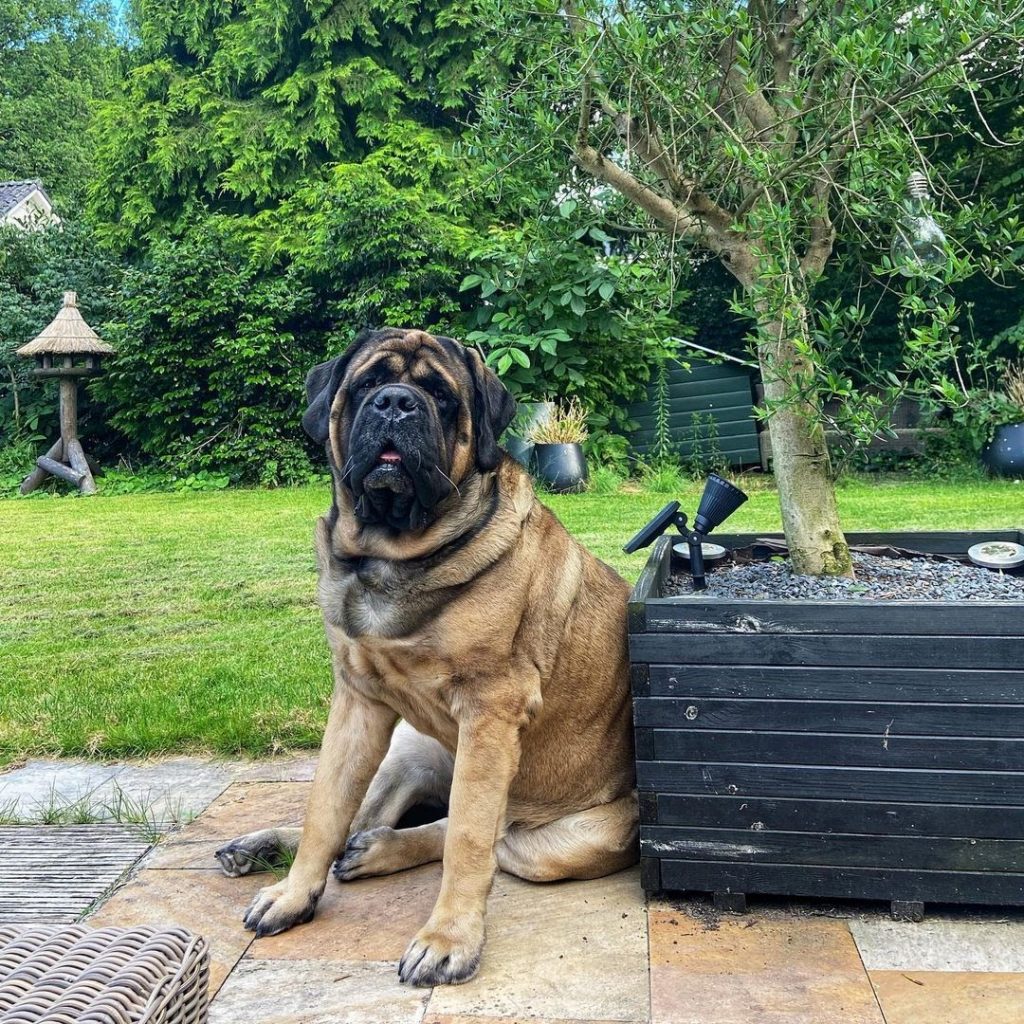

- The English Mastiff was depicted in an ancient mural that shows him killing off a lion near the Tigris river.
- The English Mastiff was speculated to have crossed the Alps with the Carthaginian General named Hannibal.
- The word ‘Mastiff’ in his name means ‘tamed’ or ‘domesticated’.
Tibetan Mastiff
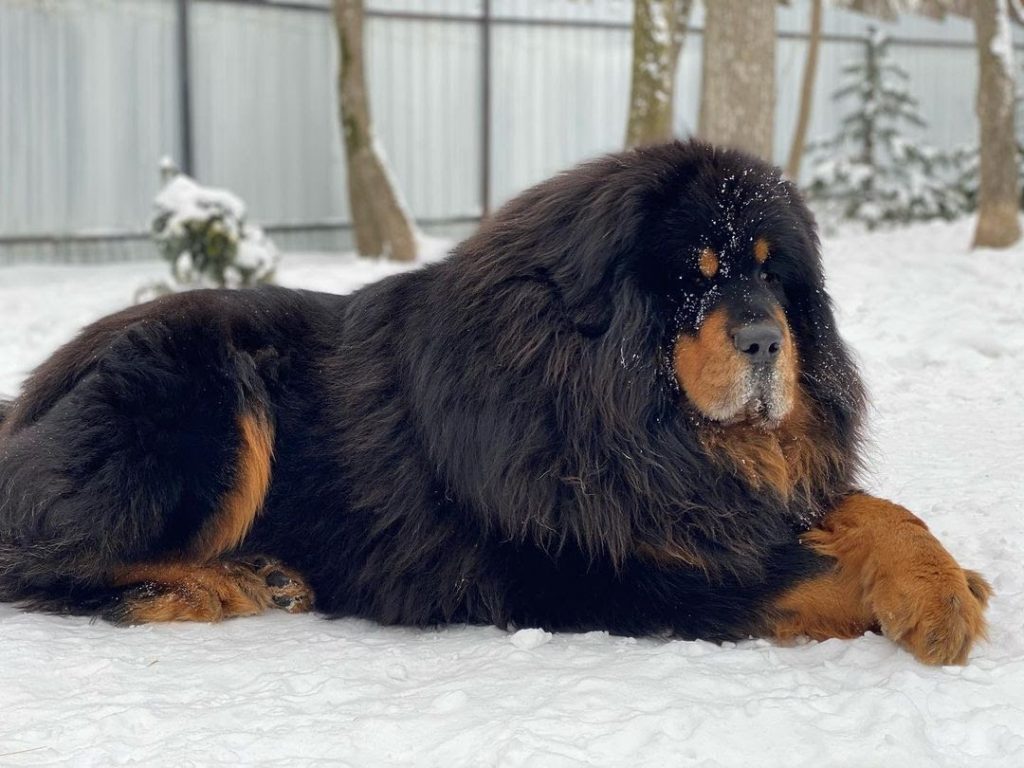

- While others shed all year round, the Tibetan Mastiff blows his coat off once a year.
- Female Tibetan Mastiffs ovulate once per year only!
- From the first glance, the Tibetan Mastiff looks like a Bear standing in all four paws.
Which Mastiff Should I Go For?
Assessing what you look for in a dog is important in choosing the right breed. Both dogs are magnificent yet they sport different looks. See which appearance are you more into! But that shouldn’t be the primary basis in making a decision. Determine which temperament you resonate with the most and which between them you can take care of.
By evaluating your compatibility with both breeds, you’ll end up choosing the right Mastiff.
